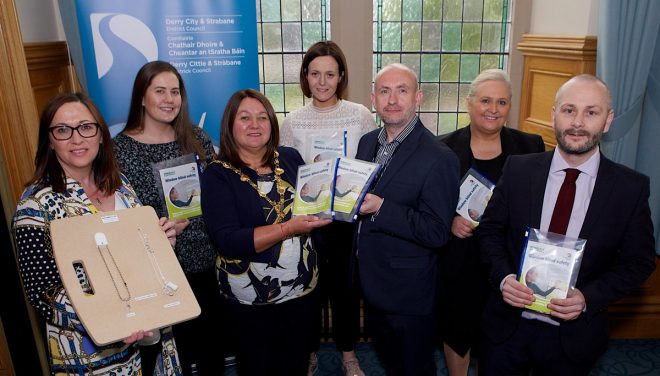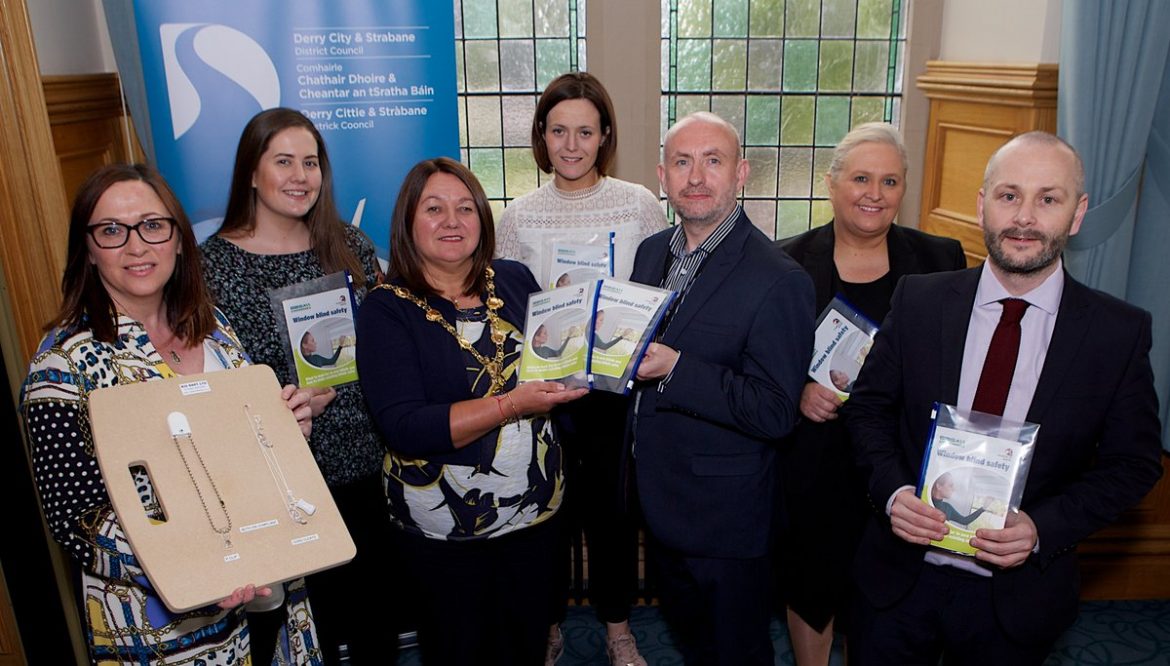 THE Mayor of Derry City and Strabane District, Councillor Michaela Boyle, today gave her backing to the latest campaign to remind people about the dangers posed by blind cords and how to safeguard children.
THE Mayor of Derry City and Strabane District, Councillor Michaela Boyle, today gave her backing to the latest campaign to remind people about the dangers posed by blind cords and how to safeguard children.
The Mayor launched the campaign on the first day of Child Safety Week, with the strong message that the dangers of getting entangled in blind cord loops are very real and that manufacturers, suppliers and parents must be aware of the latest safety requirements.
Cllr Boyle said: “Council is proactively working to raise awareness around blind safety, to remind parents and also those who make and supply these products, that blind cord loops pose a real danger to children if the proper precautions are not taken.
“By being aware of the dangers and heeding the relevant product safety guidelines the dangers can be avoided, so please make use of the online information available on how to prevent accidents or contact Council’s Health and Safety & Consumer Protection Team directly for advice.”
According to the Chief Medical Officer for Northern Ireland Report 2016 -2017 there have been three confirmed deaths from blind cord strangulation in the last three years in N. Ireland.
Children can become entangled in hanging cords when playing, climbing or exploring near window blinds and it can take as little as 15 seconds for a child to lose consciousness once they become caught up in a cord loop and death can occur in just two or three minutes.
Head of Health and Community Wellbeing with Council, Seamus Donaghy, urged people to heed the advice.
“Council’s Health and Safety & Consumer Protection Team are working hard with businesses who manufacture and supply blinds to ensure that important product safety requirements are met to prevent or reduce the risks to children of strangulation posed by looped cords on blinds.
“Council’s Home Safety Team also want to drive home the message that these accidents are completely preventable if we are all more mindful of the risks associated with blind cords and what must be done to deal with these risks.
“A number of product safety legal requirements are in place regarding the manufacture and supply of blinds, requiring that when they are supplied and installed, that safety mechanisms and warnings to safeguard children are in place.
“But we want to get the message across to both parents and those who manufacture and sell these products that these safety requirements are vital to protect children from serious harm and death.
“Parents can also avail of any help if needed by arranging a home visit through our home safety team or picking up a blind cord safety pack available from the registrar when registering a new birth.”
In 2014 stringent new standards governing the manufacture, supply and installation of new internal window blinds came into effect with the aim of reducing child accidents.
These changes place an obligation on all in the industry to supply and install compliant products.
All blinds placed on the market now have to display warning labels placed on the front of blinds as well as on packaging.
They must include safety instructions, as well as safety devices to ensure blind cords are kept out of the reach of young children.
The Standard also imposes a maximum cord and chain length where there is a likelihood of young children 0-42 months present which includes homes and public places like hotels, hospitals, schools, shops, places of worship and nurseries.
Consumers, especially parents, should also be aware of the appropriate safeguards and ensure the products they are purchasing are fully complaint with the regulations.
In the case of internal window blinds, compliance with BS EN 13120:2009+A1:2014 ‘Internal blinds – Performance requirements including safety’, provides a presumption of conformity with the General Product Safety Regulations (GPSR) 2005.
In order to reduce the risk of strangulation and internal asphyxiation, internal window blinds (and corded window coverings) should be of an inherently safe design – often called Safe by Design. Where window blinds installed require safety devices – either integral (built in) or non-integral (require separate fitting) installers must advise the customer and agree how and where such devices will be used/fitted.
Consumers who are concerned can in the first instance find advice from the British Blind and Shutter Associations (BBSA): http://www.bbsa.org.uk/domestic/child-safety/26
The below video shows what to consider when buying new blinds, how to make exiting blinds safer and what else to consider regarding window coverings in your home;
https://vimeo.com/user7269955/review/141160650/cc3bd695b2.
Further information and advice is available from the Environmental Health Service on Consumer Product Safety and Home Safety by contacting: Health and Safety and Consumer Protection Team: [email protected]
Home Safety Team: [email protected]
Tags:





